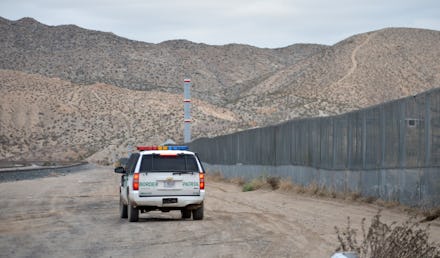Here's What'd Happen If We Tried to Build Trump's Wall — And It's Not What He Thinks

Donald Trump thinks that a wall can save America. But a stunning new study suggests that his quest to build it could end up making the very issue it's meant to resolve far worse than it is now.
The billionaire showman has proposed a "big, beautiful wall" running along the 2,000-mile U.S.-Mexico border as a means to halt the flow of undocumented immigrants into the U.S. By his lights, the wall, which he has estimated would stand anywhere between 30 and 80 feet tall, would help put an end to "Mexico send[ing] its people" across the border.
Read more: New Study Shows Just How Much Undocumented Immigrants Actually Contribute
In all reality, if Trump becomes president he won't be able to build his wall — the logistical, fiscal and diplomatic hurtles are insurmountable. It's far more probable he would enhance the tools that already exist to clamp down on the entry of unauthorized migrants — dramatically ramping up border enforcement with more intense patrolling, and building some more fences at frequent entry-points. But his pursuit of such a crackdown could very likely backfire.
The problem: As a massive study published in March in the American Journal of Sociology reveals, consistent attempts to make it harder for migrants to enter the U.S. since the 1980s haven't done anything to decrease the undocumented immigration population. Instead, they've actually made the undocumented population far larger. And if there is another spike in undocumented immigration in the future, it could have the same counterproductive effect.
How does cracking down on the border boost the undocumented population? It requires understanding how immigration across the U.S.-Mexico border has worked historically. Mexicans have been crossing the border into the U.S. for higher paying work in great numbers since the mid-20th century, but unlike most migrants crossing an ocean, they usually came temporarily. With a relatively inexpensive path back home and a tendency to take on seasonal work, the majority of Mexican migrants routinely cycled back and forth between the U.S. and Mexico.
This carried on without issue in the 1940s and 1950s, but in 1965 Congress passed the first-ever limits on immigration from the Western hemisphere. At first immigration from Mexico dipped, but by the late 1970s it had returned to the same rate that existed in the late 1950s. The immigration law changed the legal status of Mexican migrants, but it left the fundamental drivers of migration — labor supply and demand — untouched. And the old connections Mexican workers had with their U.S. employers remained intact despite the law, as well. "Once opportunities for legal entry constricted, migration did not stop but simply continued under undocumented auspices," the study's authors report.
Despite the fact that Mexican migration trends stayed roughly the same between the 1950s and the 1970s in terms of volume and destination, a mandate for harsher crackdowns on illegal immigration grew bigger as time went on, and finally picked up serious momentum by the 1980s. Between 1986 and 2008, the U.S. saw a "fivefold increase in the number of U.S. Border Patrol officers, a fourfold increase in hours spent patrolling the border, and a twenty fold increase in nominal funding." But during that same time, the undocumented population quadrupled.
Guarding the border more aggressively didn't deter people from coming in, but it did discourage them from leaving.
The study found that the militarization of the border ultimately didn't deter workers desperate for higher wages. Migrants just developed more sophisticated techniques for crossing, increasingly relying on paid specialists, called "coyotes," to make the trip. Even as border security made it tougher to cross without being caught, most migrants who failed would try again until finally making it into the U.S. But once they got into the U.S., the increased cost and difficulty of crossing made it less likely they would return to Mexico; a repeat of the whole ordeal became too expensive and risky. In other words, guarding the border more aggressively didn't deter people from coming into the U.S., but it did discourage them from leaving.
The study estimates that the late 20th and early 21st century uptick in enforcement ultimately increased the undocumented immigrant population in the U.S. by a third by discouraging their return.
The takeaway: The key lesson from the study is that when people are desperate to make a decent living, they'll show extraordinary resolve and ingenuity in finding a way to secure it. Given that migration from Mexico into the U.S. has actually reversed in recent years, immigration hawks needn't worry too much about a growing wave of undocumented immigrants any time soon. But should the flow of migrants pick up again, they should be wary of border crackdowns as a solution.
April 26, 2016, 11:30 a.m.: This story has been updated.